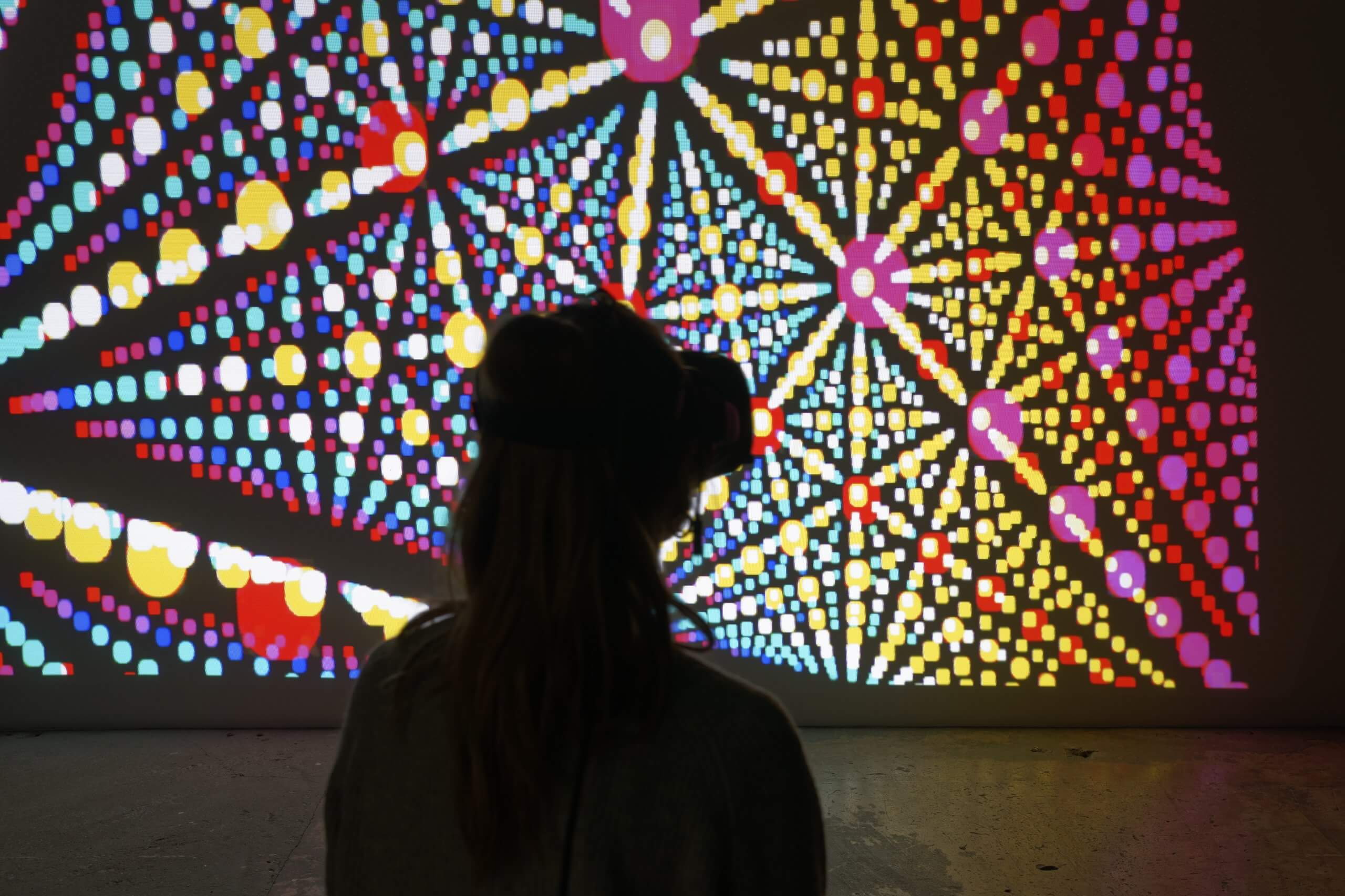SEARCH THE ENTIRE SITE

Julio Le Parc
7 alchimies en réalité virtuelleA precursor of kinetic and optical art, a founder member of the G.R.A.V (Groupe de Recherche d’Art Visuel) at the beginning of the 1960s, Julio Le Parc is an artist who constantly opens up new perspectives in art history. He here pursues his experiments with light, colour and space through a low-tech use of virtual reality.
Equipped with a helmet, we are plunged into a physical and mental black hole: a dark and enigmatic surface becomes a territory for luminous explorations and active contemplation. The artist toys with our perceptions, creating here or there moments of truncated perspectives, vertiginous voids, the trembling of the retinas or unstable, interactive movements. There is a total loss of markers.
“The spectators should not feel in submission. They should not be dominated by my propositions, they are on an equal footing. The important thing for me is that they should leave the exhibition with greater optimism.”

7 alchemies in virtual reality is a digital extension of several of his paintings made using 14 tones, a palette of colours which has not varied since 1959. By limiting himself to this “unitary system”, the artist reduces as far as possible the expression of his subjectivity on the canvas to give pride of place to the person looking at it. The role of the visitors is heightened even more by virtual reality: they now have the possibility to activate the paintings, and decide on their point of view, their position, their role and the time spent on the experience. “Generally speaking, in my experiments I have tried to provoke a different behaviour among spectators […], to combat passiveness, dependency and ideological conditioning, by developing capacities of reflexion, comparison, analysis, creation and action.”
« D’une manière générale, par mes expériences, j’ai cherché à provoquer un comportement différent du spectateur […], à combattre la passivité, la dépendance ou le conditionnement idéologique, en développant les capacités de réflexion, de comparaison, d’analyse, de création, d’action. »


